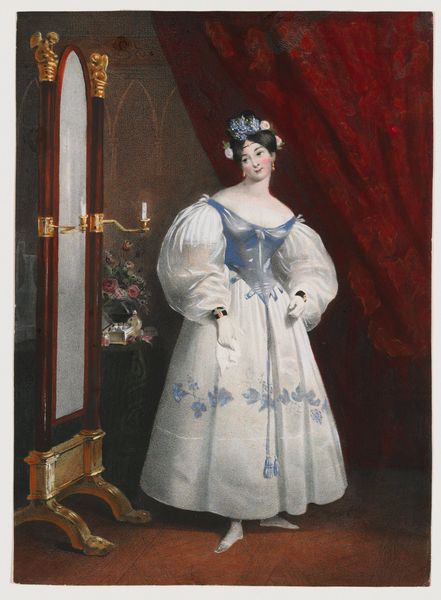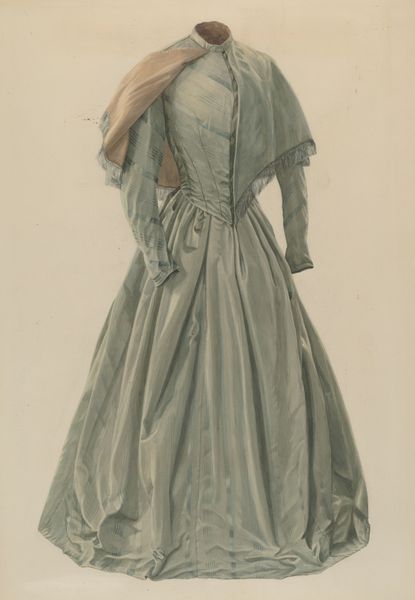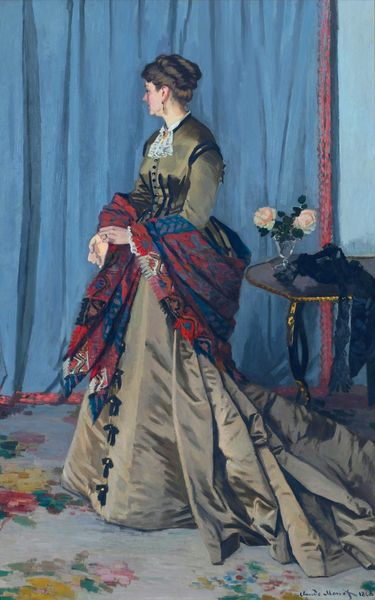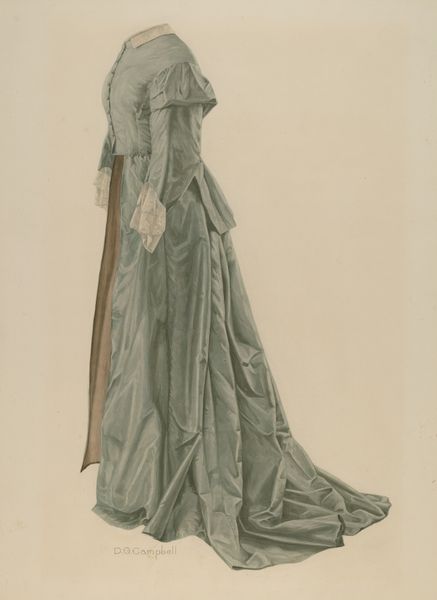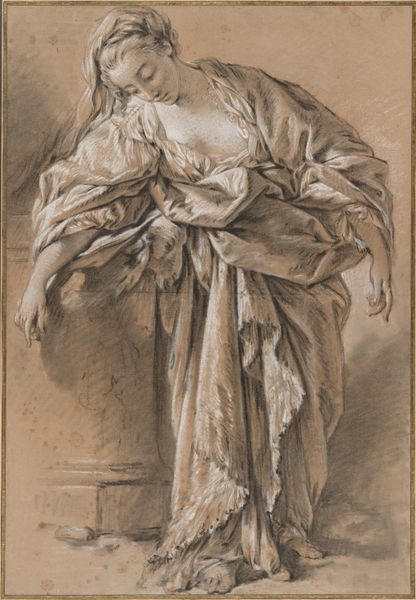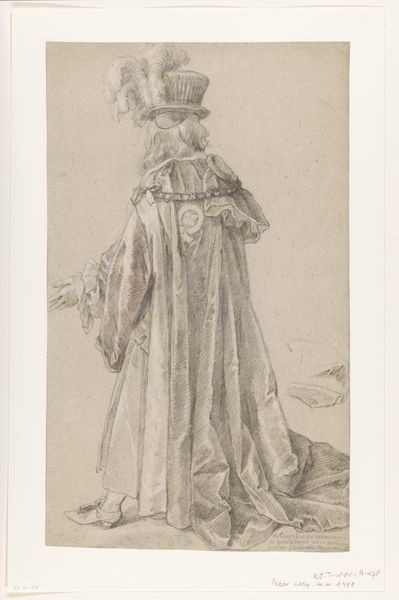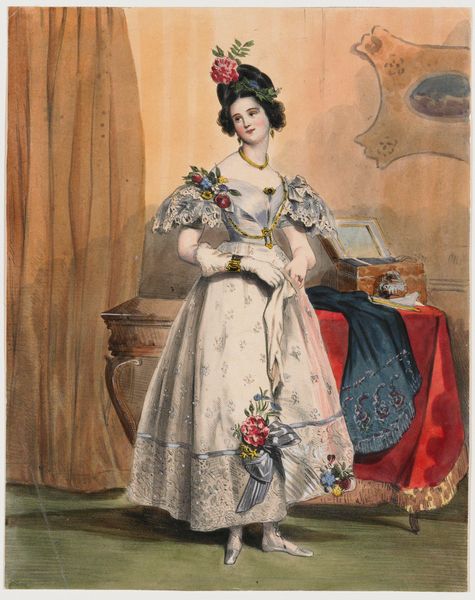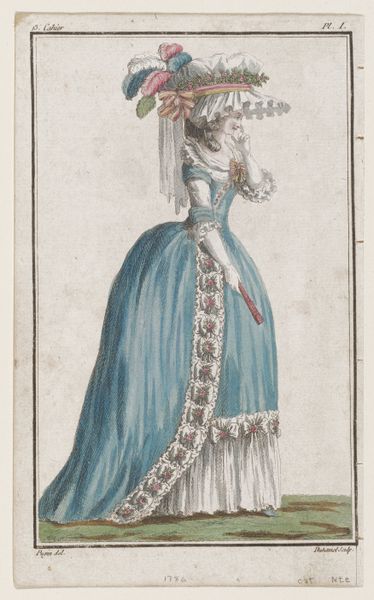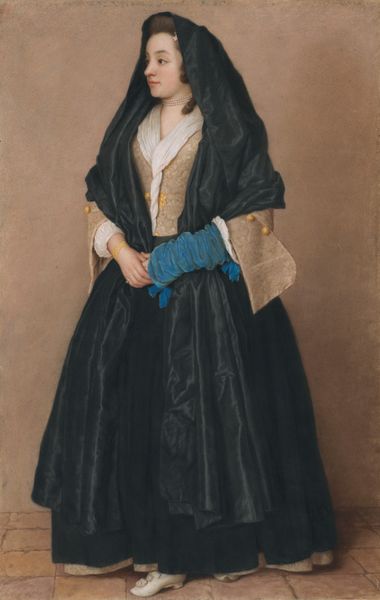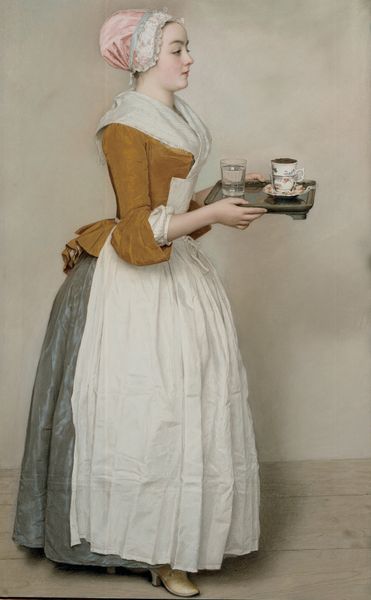
Dimensions: 43 1/2 x 19 1/2 in. (110.5 x 49.5 cm)
Copyright: Public Domain
Curator: Let’s take a look at "Penelope," an oil on canvas completed by Charles-François Marchal between 1845 and 1877, currently residing at the Metropolitan Museum of Art. It’s a poignant piece. Editor: Poignant is right. There’s a real melancholy emanating from the muted color palette, a study in greys and blues. The woman looks completely absorbed in what appears to be delicate needlework. Curator: Indeed. Marchal captures Penelope in a domestic setting, evoking her legendary loyalty and patience. She represents the ideal of the virtuous, waiting wife, forever weaving while her husband is away. Editor: I'm fascinated by the velvet of her gown, the crisp lace at her wrists, and the precise stitches she’s making. There's a tactile quality here. I wonder about the economics of dressmaking in this era, the sheer labor concentrated in these intricate details. Curator: That's a very interesting point! Genre paintings like this catered to a specific social appetite. They provided moral instruction while offering a glimpse into the lives of others. The narrative—faithfulness rewarded—resonated deeply within the socio-cultural fabric of the time. Editor: Absolutely, but I see it as more than just that. It also acts as a commentary on female labor and societal expectations placed on women. Notice the sewing: is it productive, or a mechanism to fill her idle days? Curator: A fascinating tension! I see both aspects intertwined. And considering this artwork's exhibition history, displayed in prominent salons, it’s also intriguing how institutions perpetuate certain ideologies. Editor: The object in the bottom left – the colorful yarn against the stark background – seems like a silent rebel, perhaps, challenging this whole romanticised vision of Penelope with raw, unglamorous craft materials. Curator: I’d not considered it in those terms, but it underscores how even seemingly simple narratives can reveal complex undercurrents. Editor: Well, it makes me look at this scene of Romantic realism through a very different lens. It's more than just an image. It becomes a story about material reality and class. Curator: Thank you for sharing your insightful perspective. Editor: Thanks. I really learned something today, examining this piece through its materials.
Comments
No comments
Be the first to comment and join the conversation on the ultimate creative platform.
